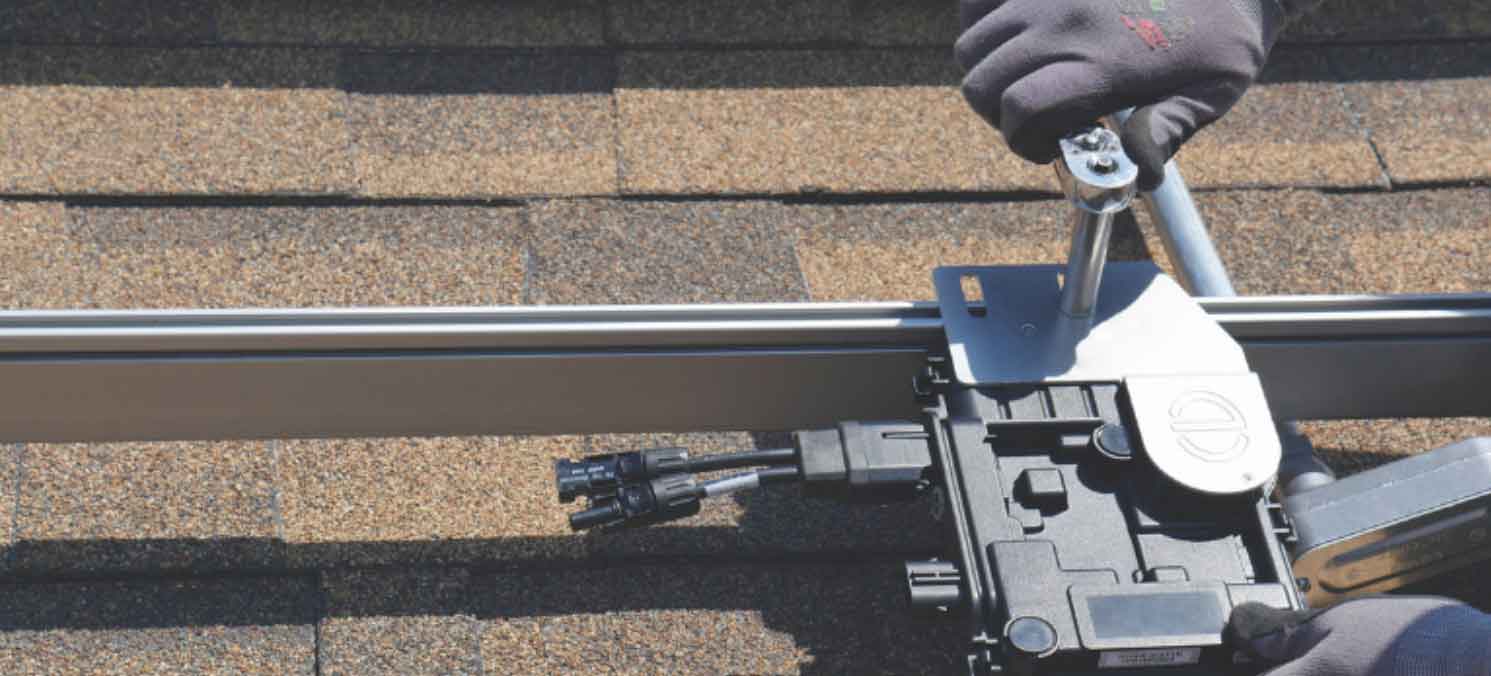
The comprehensive guide for micro inverter would cover several essential aspects, including their function, benefits, installation, compatibility with solar panel systems, and maintenance. Here’s an overview:
1. What is a Micro Inverter?
A micro inverter is a type of solar inverter used in photovoltaic (PV) systems to convert direct current (DC) generated by a single solar module to alternating current (AC). Unlike traditional string inverters, each micro inverter is attached to an individual solar panel.
2. Benefits of Micro Inverter
- Improved Efficiency: Micro inverter can maximize the energy output from each solar panel independently, which is particularly useful in scenarios where panels are partially shaded.
- Enhanced Reliability: Failure in one panel or inverter doesn’t affect the entire system.
- Monitoring and Management: Allows for advanced monitoring of each panel’s performance, helping in quick identification and resolution of issues.
3. Installation
- Location: Each micro inverter is installed directly behind or near its corresponding solar panel.
- Wiring: Micro inverter is connected to the AC output of each panel and then to the home’s electrical grid.
- Safety: Installation usually requires professional help due to the complexities of electrical systems.
4. Compatibility and Configuration
- Solar Panel Compatibility: Most micro inverter is compatible with a wide range of solar panel models, but it’s important to check the specific requirements and limitations.
- System Design: Designing a system with micro inverter might involve considerations about the roof’s layout and potential shading issues.
5. Maintenance and Durability
- Maintenance: Micro inverter generally require less maintenance than string inverter since they are less prone to large-scale failures.
- Durability and Warranty: They are designed to last as long as the solar panels themselves, often around 25 years, with warranties typically matching this duration.
6. Cost Implications
- Initial Cost: The initial cost can be higher than traditional systems due to the number of micro inverter needed.
- Long-Term Savings: The increased efficiency and durability can lead to greater long-term savings and potentially higher returns on investment.
7. Choosing the Right Micro Inverter
- Specifications: Pay attention to the power specifications and compatibility with your chosen solar panels.
- Brand and Warranty: Consider reputable brands and compare their warranty terms.
- Certifications: Look for products with necessary certifications and approvals for safety and performance standards.
8. Future Trends and Technologies
- Innovations: Keep an eye on new features like enhanced energy management and integration with smart home systems.
- Regulatory Changes: Stay informed about changes in local regulations which might affect the use of micro inverter.
9. Troubleshooting and Common Issues
- Communication Failures: Sometimes micro inverter fail to communicate data to the monitoring systems. This can be due to wiring issues or signal interference.
- Physical Damage: Being exposed to the elements, micro inverter can suffer from physical damage. Regular inspections are recommended.
- Inverter Failure: If a micro inverter fails, it only affects the output of one panel, not the entire system. Replacements are typically straightforward and covered under warranty.
10. Installation Best Practices
- Professional Installation: Always use certified professionals who are familiar with the specific requirements of micro inverter systems.
- Follow Manufacturer Guidelines: Adhere closely to the installation guidelines provided by the micro inverter manufacturer to ensure optimal performance.
- Electrical Safety: Ensure that all electrical connections are secure and that the system complies with local electrical codes.
11. Regulatory and Compliance
- Electrical Codes: Installation must comply with the National Electrical Code (NEC) or other local codes.
- Certifications: Look for micro inverter that meet international standards like IEEE or IEC for performance and safety.
- Permits: Ensure that all necessary permits are obtained before installation, which may involve inspections or approval from local authorities.
12. Environmental Considerations
- Recycling and Disposal: At the end of their lifecycle, micro inverter should be disposed of properly or recycled to minimize environmental impact.
- Energy Efficiency: By maximizing energy output even under less-than-ideal conditions, micro inverter ensure that solar systems use as much solar energy as possible, reducing waste.
13. Economic Considerations
- Return on Investment (ROI): Despite higher initial costs, the improved energy output and potential for fewer downtimes can result in a higher ROI over the life of the system.
- Incentives: Explore any available government or local incentives for renewable energy investments that might offset the initial cost of micro inverter.
14. Advancements in Technology
- Integration with Battery Storage: As battery storage solutions become more affordable, the integration of micro inverter with these systems is expected to improve, allowing for more effective energy management.
- Smart Grid Compatibility: Future developments may focus on enhancing the compatibility of micro inverter with smart grid technologies, enabling better demand response and load management.
15. Consumer Education
- Workshops and Seminars: Manufacturers and distributors may offer educational programs to help consumers understand the technology.
- Online Resources: Comprehensive guides, video tutorials, and technical support forums are valuable resources for ongoing education.
By understanding these comprehensive aspects of micro inverter, consumers, installers, and stakeholders can better navigate the choices and challenges associated with this technology, ensuring that solar energy systems are as effective and efficient as possible.
Choosing the right micro inverter is crucial for maximizing the benefits of a solar panel system, ensuring that it operates efficiently, safely, and economically over its lifetime.
